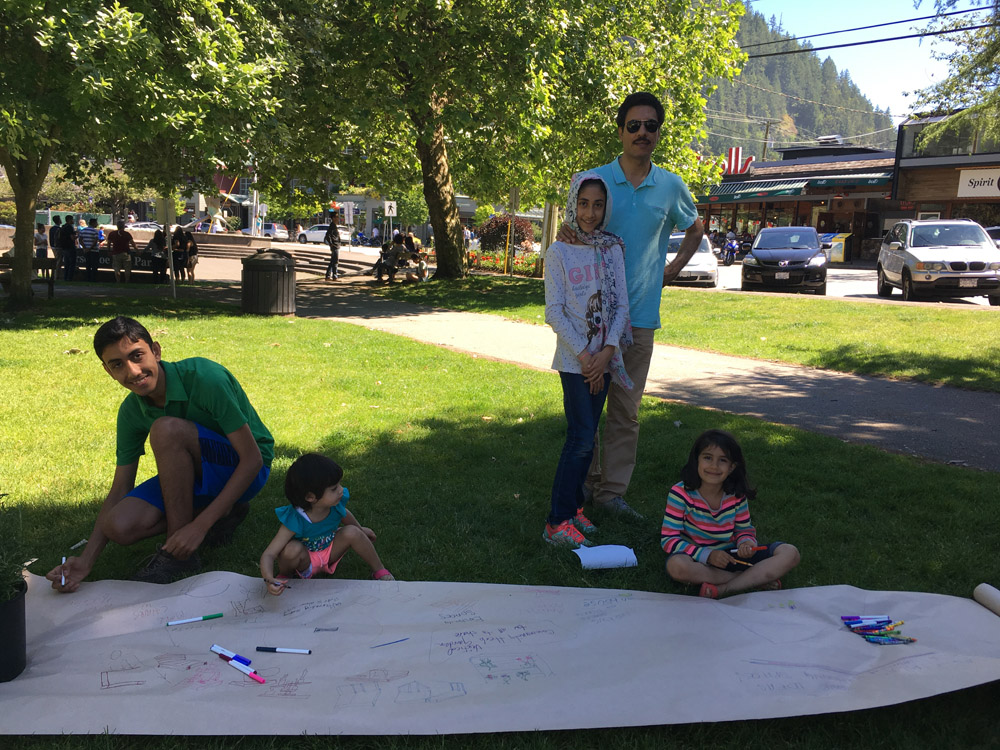The Power’s in the Process: What we can learn from artist interventions in planning and design
in planning and design
TEXT BY SARA UDOW AND NADIA GALATI
Anyone who works in or is passionate about city-building knows that public engagement processes are often limited in who they reach. Those who participate (which itself requires time and resources) often experience ‘consultation fatigue’ and develop apathy toward the process. Participants volunteer their time and energy, only to wait years before their feedback and ideas are implemented, if they are at all. In addition, traditional consultation processes often fail to reach diverse demographics within a community. As planners who have worked on many park revitalizations, master plans and new developments, we have become increasingly frustrated by what we see as a limited and exclusive process.

Learning from Socially Engaged Art and Artist-Run Centres
Socially engaged art is a medium that engages people in social discourse and/or change through collaboration with individuals, communities and institutions in the creation of art. Recognizing that planning and design can learn a lot from socially engaged art practices, we partnered with artist-educator Jennie Suddick to create “Crazy Dames.” The name is an ode to Jane Jacobs, the seminal urban theorist, who was often dismissed as a ‘crazy dame’ by male counterparts. We use the artist’s studio as an experimental space to test Jacobs’ ‘crazy’ ideas: her focus on people and fostering tactical and collaborative approaches to our cities.
Over the past few years, Crazy Dames has worked with Artist Run Centres (ARCs) and galleries across Canada as socially-engaged artists. ARCs were established in Canada as galleries and art-spaces initiated and managed by artists. Increasingly, ARCs are involving their artists and gallery visitors in conversations about city-building, often through socially-engaged art practices.
Working with ARCs, we’ve recognized some key lessons that city-builders can learn from ARCs about power-sharing.
First, ARCs open their doors to experimentation and diverse forms of arts-based engagement. There is not one linear process, but instead, extensive research (stakeholder mapping), flexibility, and shared creativity to find the most appropriate (and interesting) ways to engage.
Second, ARCs are dedicated to partnership development. While they have an established community of artists and visitors, ARCs are always interested in exploring new communities to partner with.
Third, ARCs welcome opportunities to create. Instead of solely collecting ideas and feedback through engagement, there is an openness to co-design and create projects illustrating how input can be turned into action.
Examples of Crazy Dames’ socially engaged art practice work with Canadian Artist Run Centres
Building Together, Yellowknife Artist Run Community Centre (YARCC), Yellowknife, Northwest Territories
In Fall 2017, Crazy Dames worked with the YARCC on a city-wide public engagement initiative called Building Together, where we took over a vacant mall space to codesign an art installation.
In Building Together, we worked closely with YARCC to engage a diverse group of community members and school groups in a series of arts-based workshops. As outsiders to Yellowknife, we wanted to open up the space to local community groups and artists to run their own workshops. This included an incredible workshop by artist and Dene Nahjo founding member Melaw Nakehk’o, who shared Dene Nahjo’s 2017 urban hide tanning camp and led a discussion on Indigenous cultural resurgence in the context of reconciliation in Canada. Lastly, we invited planners, councillors, and MPPs to join local artists and active community members in reimagining public spaces in a creative placemaking workshop.
From the beginning, we were open about where the process would take it. After the engagement workshops, we decided, alongside the YARCC, to present recommendations we gleaned from our workshops to city council. This included a recommendation for a community arts centre. In 2019, the YARCC developed a mobile art gallery as a temporary response.
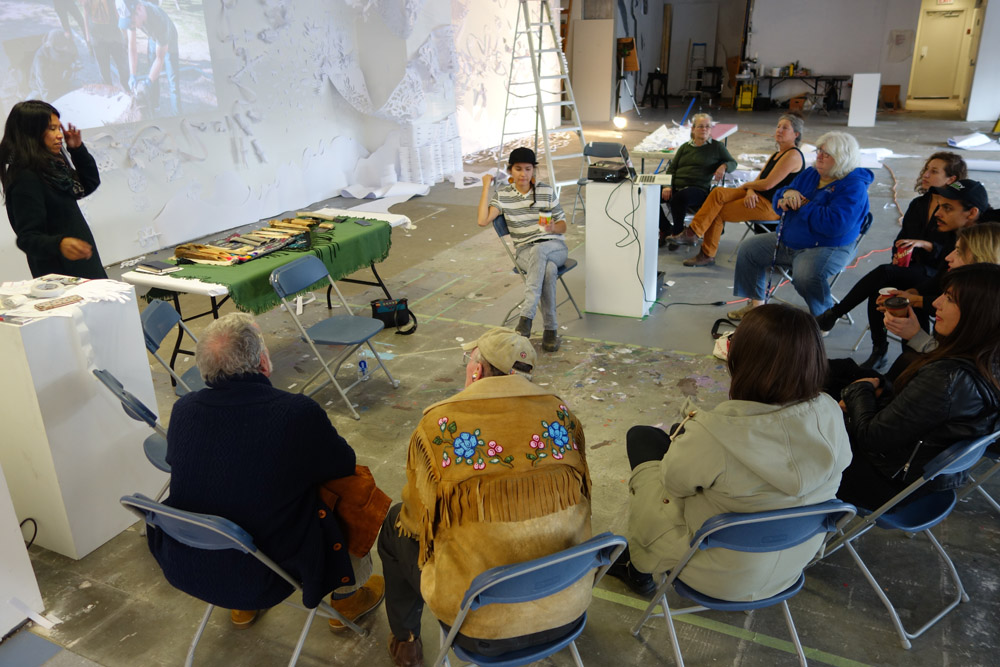
Imagining Collective Culture, Arts Assembly, West Vancouver, BC
In 2017, Crazy Dames worked with Arts Assembly to develop a community-designed gathering space in Horseshoe Bay that would act as a site for community engagement and user research. We facilitated an initial workshop in the park itself, to learn about what types of community gathering spaces attendees and passers-by would want there.
Participants recommended having a picnic table with benches, shade, a vertical garden, and a busking stage, to name a few. We then worked with community members to develop the gathering space using waterproof fabric, shipping palettes, and other recycled materials. Over the course of five days, we brought food, music, and art to the space. We had conversations with people about their experiences, needs and priorities in the park, all of which we documented.
This simple community-driven pilot project illustrates to community members that their involvement in a process can easily be integrated into design, showcasing that their input is meaningful and powerful.
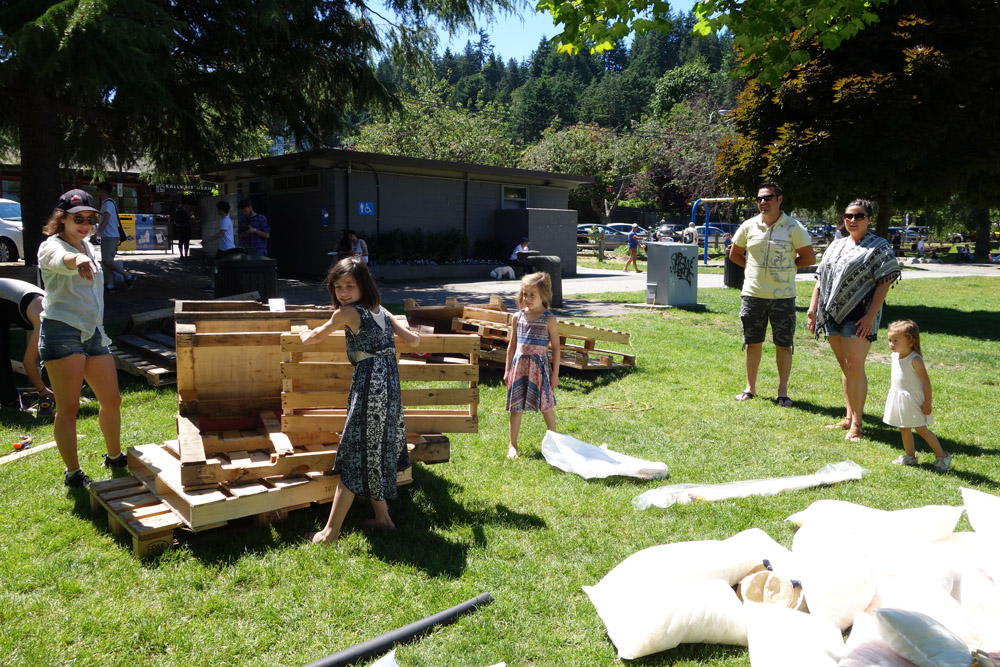
Creative Placemaking Workshop, Open Space Art Gallery, Victoria, BC
We were invited to Victoria, B.C. by Open Space Art Gallery (Open Space), to lead creative placemaking workshops. Before we arrived, there was a controversial park revitalization project that was held up due to the municipality’s oversight in consulting with some of the main park-users: street-involved people who would set up camp every night in the park. The new designs for the park included a children’s playground, which in Victoria means street-involved people could not camp there anymore. Many anti-poverty activists protested the park redesign, which then failed to pass at council.
Open Space reached out to Our Place Society, a nonprofit organization assisting those faced with homelessness, poverty, addiction, and mental health challenges in Greater Victoria. A workshop was planned with street-involved folks to talk about the park and other issues within the city. Crazy Dames invited City of Victoria urban design, city planning, and parks staff.
By working collaboratively, there was an opportunity for City staff to learn concerns from a group of people rarely consulted. The street-involved participants who attended were able to share, felt heard, and learned from City staff about staff goals and ideas—much of which focused on eradicating homelessness. We provided recommendations to City Council and the Parks Planning division, which included the desire for more public washrooms, longer benches, and storage.
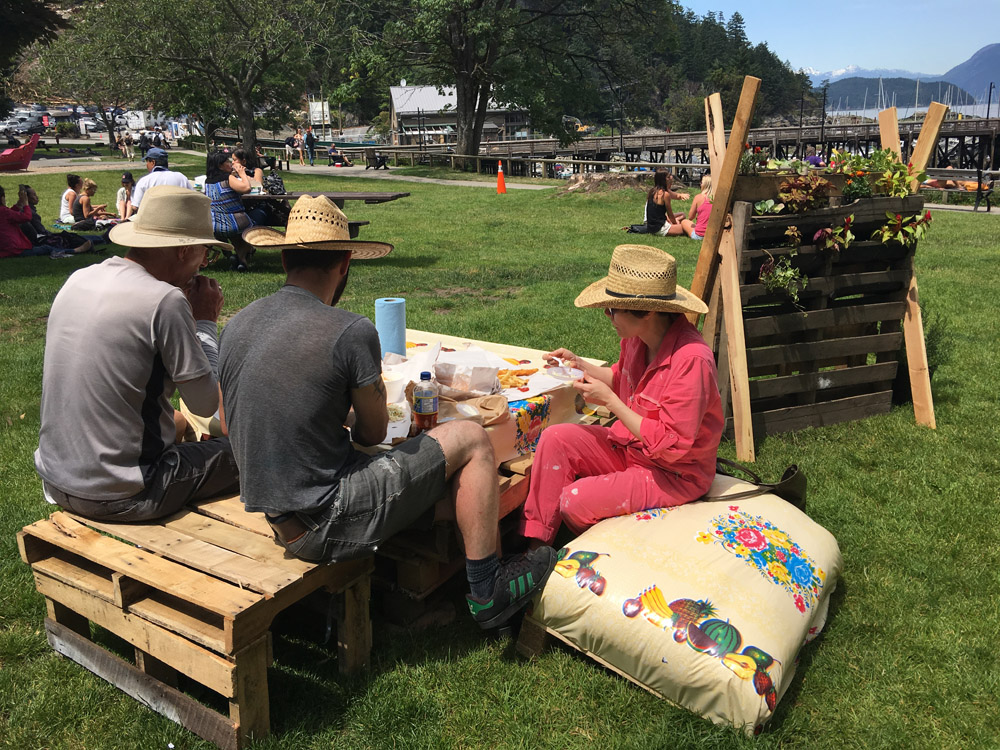

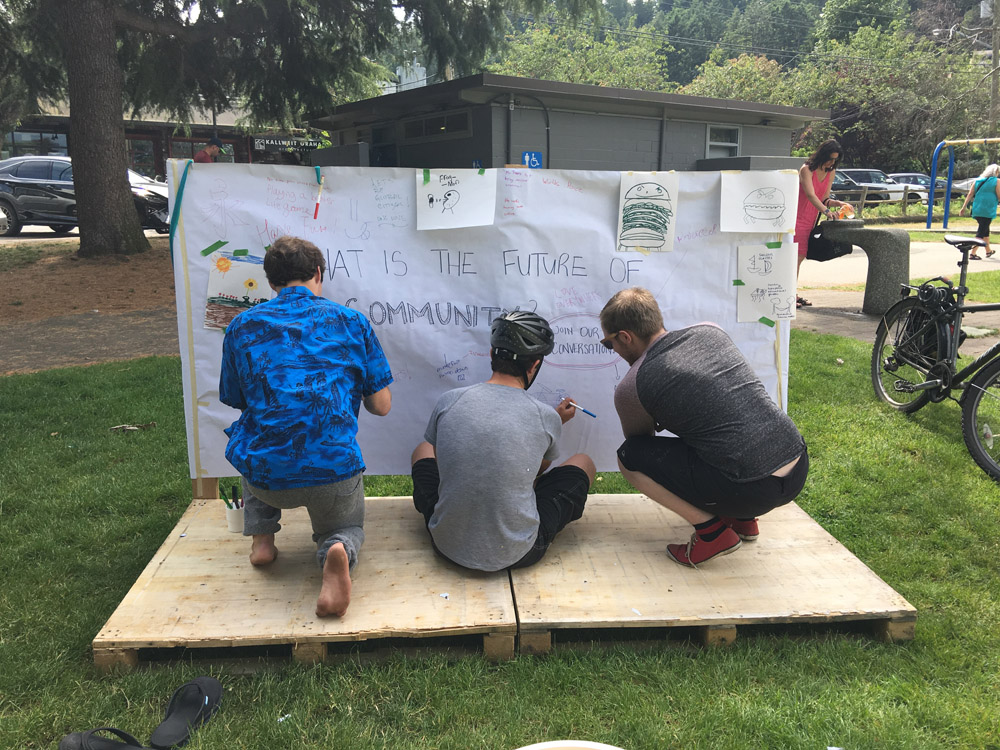
Next steps for planning and design
Working with ARCs, we’ve learned how successful nonlinear, creative and inclusive projects can be. When engagements are rooted in experimentation, partnerships, and prototyping, there are opportunities to reach diverse demographics, resolve consultation fatigue, and (importantly) share power and ownership of projects and public spaces. As municipalities, designers, and planners are re-examining how and who to engage, we should turn to socially engaged art practices and ARCs for key lessons.
BIOS/ SARA UDOW AND NADIA GALATI ARE MEMBERS OF PROCESS, A TEAM OF URBAN PLANNERS, DESIGNERS AND ARTISTS. THROUGH COLLABORATIONS AND CREATIVE PROCESSES, THEIR WORK AIMS TO TRANSFORM HOW WE PLAN, DESIGN AND EXPERIENCE PLACES AND COMMUNITIES. WE PROVIDE STAKEHOLDER ENGAGEMENT, URBAN PLANNING, CULTURAL PLANNING AND PUBLIC ART SERVICES.
